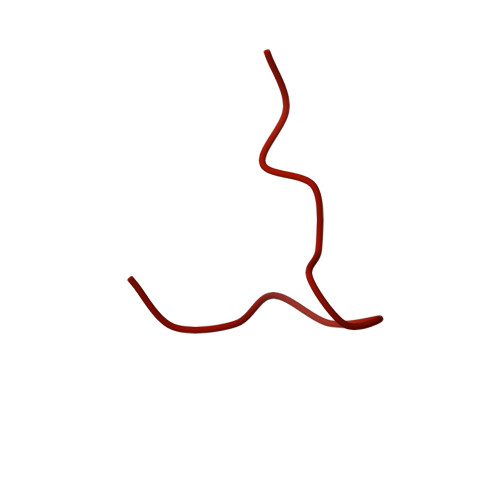Slowly folding surface extension in the prototypic avian hepatitis B virus capsid governs stability.
Makbul, C., Nassal, M., Bottcher, B.(2020) Elife 9
- PubMed: 32795390
- DOI: https://doi.org/10.7554/eLife.57277
- Primary Citation of Related Structures:
6YGH, 6YGI - PubMed Abstract:
Hepatitis B virus (HBV) is an important but difficult to study human pathogen. Most basics of the hepadnaviral life-cycle were unraveled using duck HBV (DHBV) as a model although DHBV has a capsid protein (CP) comprising ~260 rather than ~180 amino acids. Here we present high-resolution structures of several DHBV capsid-like particles (CLPs) determined by electron cryo-microscopy. As for HBV, DHBV CLPs consist of a dimeric α-helical frame-work with protruding spikes at the dimer interface. A fundamental new feature is a ~ 45 amino acid proline-rich extension in each monomer replacing the tip of the spikes in HBV CP. In vitro, folding of the extension takes months, implying a catalyzed process in vivo. DHBc variants lacking a folding-proficient extension produced regular CLPs in bacteria but failed to form stable nucleocapsids in hepatoma cells. We propose that the extension domain acts as a conformational switch with differential response options during viral infection.
Organizational Affiliation:
Julius Maximilian University of Würzburg, Department of Biochemistry and Rudolf Virchow Centre, Würzburg, Germany.














